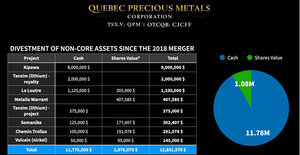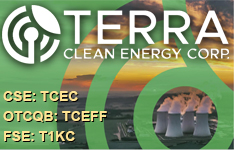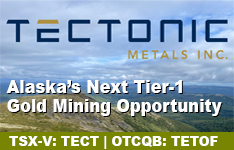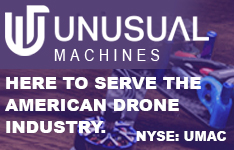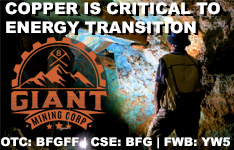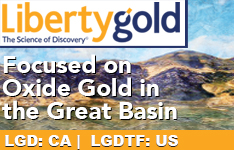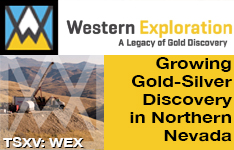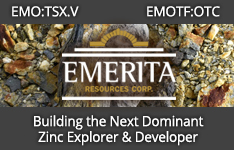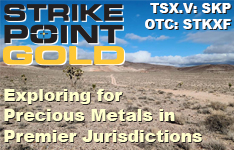MINING AND ENERGY CHIEFS and their bankers are watching the metals melt-up with hands poised to flip the share faucet.
The flow includes share grants to employees who want to surf the next commodities wave and want their options priced NOW—before rising silver (above $14 an ounce Tuesday), gold (headed to $1,000 an ounce again) and crude oil (near a six-month high of $60 a barrel) swell into a tidal wave.
Miners and drillers also look to eager investors for fresh capital—thus, more shares via secondary offerings, private placements and shelf registrations. Most employ those dreaded three words—dreaded, that is, for current shareholders: the cash is for “general corporate purposes.”
The best of the lot know they have to equal their new share capital with equal amounts of value. Dilute current shareholders by a buck, or in the case of Anadarko Petroleum (APC)’s 30 million share offering Tuesday, by $3, they better had create an extra buck of equity for their tried and trues.
Sean Roosen of Osisko Mining (OSK in Canada) knows this as he hurtles his Montreal company toward a fully operational Quebec gold mine. “I want my longest shareholders as enriched as our newest ones will be,” says Sean, who earlier this year engineered one of the largest secondary stock sales ever by a non-producing gold company (non-producing yet). Mr. Roosen, considered a heavyweight in the mining business, says this in his usual calm and unflappable fashion—as if, like a young and pointy-eared Spock, he expects the entire world to savvy his reasoning.
Ferdi Dippenaar down there in South Africa is in a race as well, like many pint-sized companies on their way to becoming mid-tier metals producers. Ferdi’s Great Basin Gold (GBG in USA), shares of which this author and his family own, is racing on two fronts, Nevada and South Africa, to put the mills and and roads and pits in place that will crush and process and transport the tonnes of ore that result in a half million ounces of gold per year.
Great Basin raised some eyebrows this spring when it issued more than 2 million shares to top executives after a long sideways move in the miner’s shares, which trade in Canada and the USA. Ferdi acknowledges the concerns and explains, “I have been with the company for more than three years. Over that time I have only exercised 280 000 options, so I believe in the value of the company. This year, instead of a salary increase, bonus etc., to preserve cash, we, myself and my management team, all accepted options.”
Mr. Dippenaar adds with some bravado, “I have also participated in every financing, and personally own 280 000 shares, again, because I believe in GBG.”
My touchstone shareholder, Gene Arensberg of Got Gold Report and Gene Splicing With Thom, says he keeps a hawk’s eye on equity vultures. “My feeling is a company should reward performance but not remove the incentive for company execs to purchase their own shares in the public market. It may be out of touch, or romantically old fashioned, but I believe if they believe in the company then they should be buying shares, not have them handed to them for free even if they have been decimated by 66%, or whatever.”
Here are four candidates linked to special situations or events that will benefit hard-asset operators and their longtime shareholders—even in the event of a leaky share faucet. All in one way or another are facing production, partnership or fiscal ‘deadlines.’ At least one is developing share-for-share or cash transactions designed to raise money and—one prays—benefit shareholders.
—Platinum Group Metals CEO R. Michael Jones told me he looks to double the value of his company’s shares via acquisition, partnership or strategic alliance. Mr. Jones's platinum company (PLG in USA and PGM in Canada) and its partners have spent about $30 million developing a mining strategy for their platinum resource on South Africa's Western Limb of the Bushveld Complex. Mike Jones says his small company is now within two months of reaching a “decision point” about its future. Large capital requirements loom for partnerships with Wesizwe Platinum Ltd. (JSE:WEZ) and Anglo Platinum (JSE: AMS) of South Africa. The shares easily could double by July if a transaction occurs. (Please see the entire Q-A). Platinum Group Metals’ Bushveld mine is projected at 185,000 ounces a year for its 74% share of the mine, with 22 years of life. Cap-ex cost, total, would be $566 an ounce. See more from Mr. Calandra and Mr. Jones.
— Great Panther Resources (TSX:GPR) is one of several Mexico silver producers showing up on bankers’ Blackberrys for two criteria: 15% or greater production gains year-to-year at operating mines in Sierra Madre country (Topia and Mapimi) and dramatic extension of mine life for at least one of those mines (Topia). Great Panther hopes to pull 2.3 million ounces of silver from the ground in 2009. CEO Bob Archer, whom I will meet later this week, says “all-share transactions (with regards to Mexico mine mergers) still make sense.” The company, one of several in or around Guanajuato and other premium-producing silver regions of metal-friendly Mexico, is taking the lead on a melding of miners—a la Silver Wheaton and other junior producers that have rolled their respective transaction spheres into large ball bearings. The Panther’s numbers are due out this week, but it only has $600,000 of cash in the bank (as of Dec. 31, 2008). Still, this slide says it all. (Please see it.)
—Mexico silver producers are hotter than the weather right now—ahead of what could be potent metal returns and a whirlwind of merger activity in that nation. One candidate looking to spin off its Mexico silver and gold operations from a Peru copper venture is Candente Resource (DNT in Canada). The shares look fertile after years of barren returns. The split, CEO Joanne Freeze tells me, will occur in the next two months.
—Finally, in the three months since last talking person-to-person with Canada Lithium’s Judy Baker, I must acknowledge the CEO has done most everything she pledged. She has doubled the share price to a market worth of about $17 million Canadian. She has raised several million dollars in the marketplace. She has fashioned a strategic partnership with a Japanese trading house. Canada Lithium’s Baker (CLQ in Canada) says the small company will start sending lithium carbonate—wielding the same standards as battery market criteria—to a Japanese trading house. The concentrate comes from the company’s developing Quebec property up there in Canada. Whilst Ms. Baker will not tell me which Japan trading house, she did tell me this, “There is a very competitive environment to locate future sources of lithium, and the trading houses do not want their strategies for pursuing future sources of lithium out there in black and white. It is a large Japanese trading house; so the three large Japanese trading houses are: One is Mitsubishi; two is Mitsui; and three is Itochu.” Judy tells me the Quebec Lithium Project, if proven to be the rich source of lithium carbonate the company envisions, could be worth as much $300 million U.S., given the price of battery-grade lithium carbonate. I tend to slashe estimates such as that in half, and then in half again—but even a $75 million resource is about 4 times greater than Canada Lithium’s market worth. Judy Baker just raised money at 16 cents a share Canadian.
I am this week at the Las Vegas Money Show with Streetwise Report’s Gordon Holmes. We are grubbing around for silver coins and meeting with silver analysts and with Endeavour Silver (EXK in USA), a Mexico miner whose shares, once again, we at home own. The Money Show will feature several sessions on silver as an investment and is competing this week with New York City’s precious metals conference in Times Square.
 Thom Calandra is the author of subscription service Ticker Trax at www.tickertrax.com. Thom’s holdings are listed on www.Stockhouse.com under the “portfolio setting” for user TCALANDRA. It is public and free to view. He and his family own recently minted gold and silver coins. They own shares of Great Basin Gold and Endeavour Silver.
Thom Calandra is the author of subscription service Ticker Trax at www.tickertrax.com. Thom’s holdings are listed on www.Stockhouse.com under the “portfolio setting” for user TCALANDRA. It is public and free to view. He and his family own recently minted gold and silver coins. They own shares of Great Basin Gold and Endeavour Silver.




